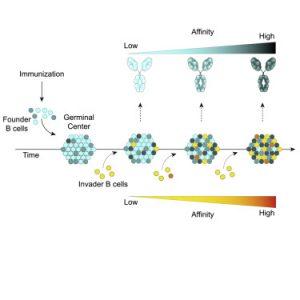Cells are known for competing for a place in the germinal centre. Germinal centres, which are created by exposure to a disease or a vaccination, serve as a sort of immune system training facility, aiding B cells in honing their defence against the danger. These structures only let B cells with the highest affinity for the pathogen or vaccine to enter, where they go through rounds of mutation to create ever stronger antibodies.
The interaction of naïve B lymphocytes with high affinity ones in the late-stage germinal centre is crucial for a varied immune response. However, it depends on the virus whether that helps or hinders.
However, one peculiarity of this procedure has long perplexed scientists: germinal centres seem to alter the admittance standards over time. A germinal centre eventually produces up to 30% of its graduates when B cells with little or no affinity for the virus inundate the once-exclusive location. Researchers have just published a report that describes the event in detail and hypothesises that high-affinity B cells, which in the early stages displace inferior B cells, are what cause this reversal in late-stage germinal centres (Figure 1). The research provides fresh insight into how the immune system responds to illnesses like COVID and HIV.
The team anticipates that their research will help future efforts to create vaccines and further immunologists’ knowledge of how the body reacts to illness.
Journal article: Hägglöf, T., et al., 2023. Continuous germinal center invasion contributes to the diversity of the immune response. Cell.
Summary by Stefan Botha











